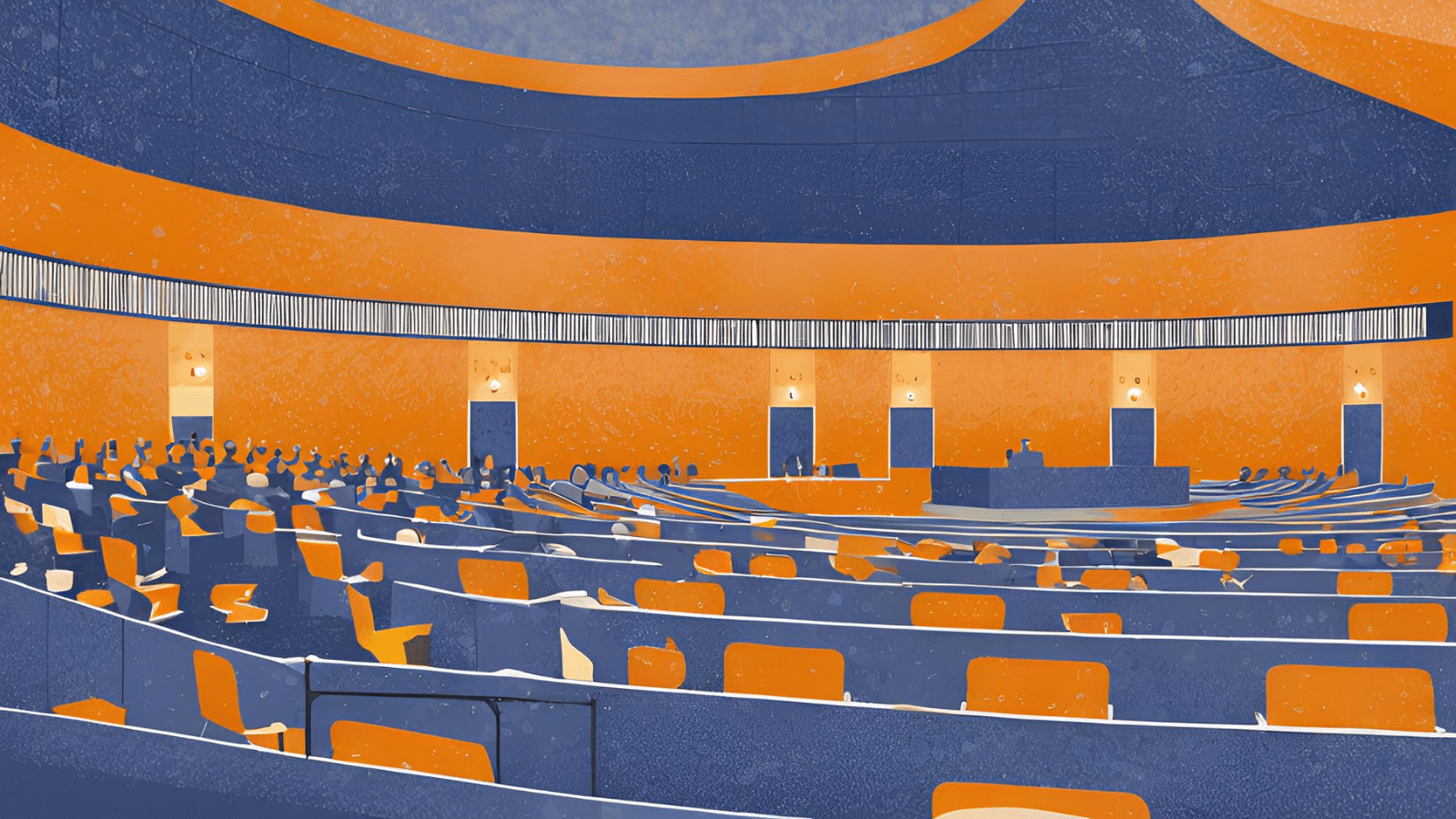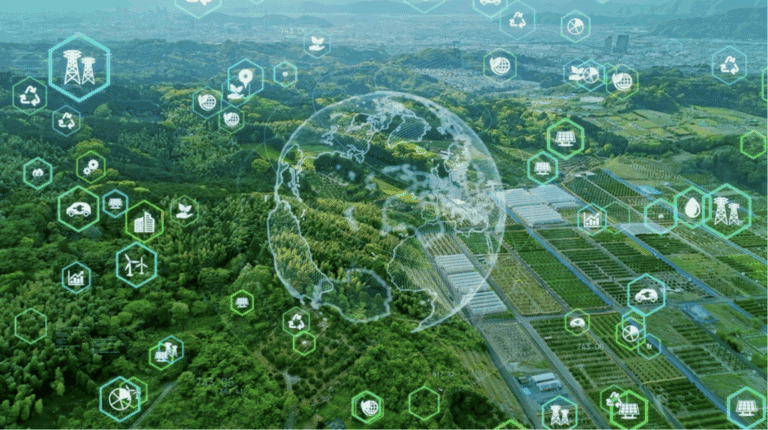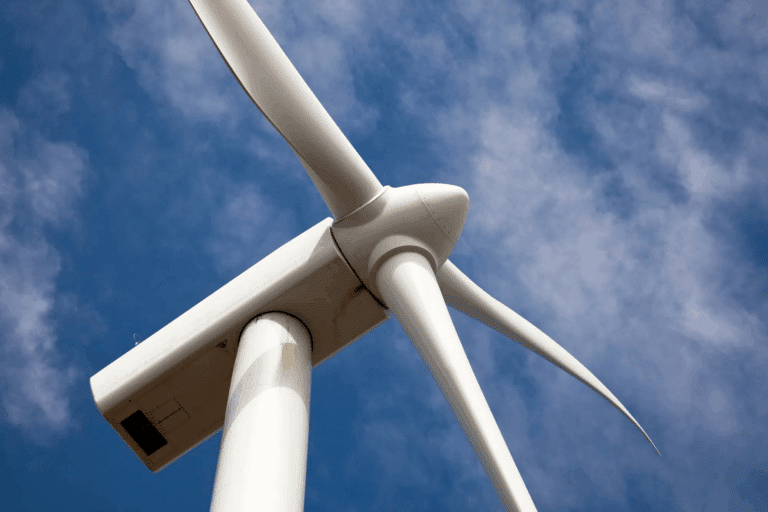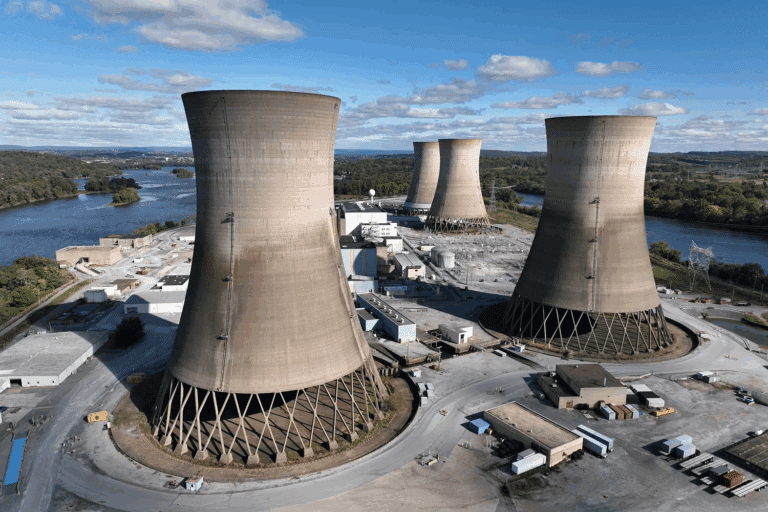The US led the world to reach a huge climate deal. Then, it switched sides.
Ten years after nations adopted the Paris Agreement, its objectives are in jeopardy amid rising climate pollution and a political backlash against clean
Current Access Level “I” – ID Only: CUID holders, alumni, and approved guests only
Insights from the Center on Global Energy Policy

This Energy Explained post represents the research and views of the author. It does not necessarily represent the views of the Center on Global Energy Policy. The piece may be subject to further revision. Contributions to SIPA for the benefit of CGEP are general use gifts, which gives the Center discretion in how it allocates these funds. Rare cases of sponsored projects are clearly indicated.
For a full list of financial supporters of the Center on Global Energy Policy at Columbia University SIPA, please visit our website at Our Partners. See below a list of members that are currently in CGEP’s Visionary Circle. This list is updated periodically.
Following recent European Parliamentary elections, the next five years for European energy and climate policies are going to have a different political framework than the previous 5-year period. Overall, policymakers may opt for more pragmatism and less ambition in the implementation of the Green Deal, although it is unlikely to be dismantled. Among the key issues to watch are the negotiations over 2040 EU-wide GHG emissions reduction targets and potential changes to the timelines for ICE phaseouts. EU Parliamentary elections are just the first step in a bigger change for European institutions over the coming 6 months. Meanwhile, a bigger game is happening at the national level, which will also influence what happens at the European level on energy and climate-related policy.
720 members of the European Parliament (MEPs) were elected on June 9, 2024. Their mandate will end in 2029. Despite the strong performance of the far-right parties (European Conservatives and Reformists [ECR], and Identity and Democracy [ID] which together gained 23 seats),[1] the outcome was not as dramatic a swing to the radical right as pre-election speculation suggested. Instead, the “Center” of the political spectrum held: this includes three parties that have often collaborated in the past – the European People’s Party (EPP), Renew Europe (Renew), and the Socialists and Democrats (S&D). Together they currently represent 399 MEPs,[2] which in principle should allow European institutions to continue on a relatively similar pathway.
Markets and industry are tracking the potential energy and climate policy implications of the new EU Parliament – specifically, whether the far-right parties will have enough strength to weaken climate policies in various ways as part of their populist campaign targeting affordability through a shift of regulatory and fiscal costs to businesses and consumers linked to climate policy. However, the situation is still in flux, as there might be some changes in the parties’ composition before the EP’s first plenary on July 16, and even afterward. The German AfD is attempting to form another party within the EP, or could join the one planned by Hungarian, Austrian, and Czech far-right and populist parties.[3] Meanwhile the exit of the Czech ANO party due to disagreements on migration policy and the Green Deal further weakened Renew Europe.[4] Additionally, around 87 MEPs are either non-attached members (such as the AfD) or not (yet) affiliated to any other group. Finally, the parties in the European Parliament are a grouping of like-minded parties from various countries, which does not exclude variations on certain issues either within EP parties based on national context or regarding the alliances that EP parties form to vote on some topics. As these maneuvers play out, there will be more clarity on the scope and breadth of potential changes to EU energy and climate policy.
Among the first tests for a potential majority at the EP will be the approval of the next European Commission’s president, which is another important signpost for energy and climate policy. This role is currently held by Ursula van der Leyen who has been crucial for the Green Deal – the foundation of the EU’s “Fit for 55” program and recent acceleration of its decarbonization goals. The European Council – the 27 heads of state or government – which proposes a candidate have nominated her again[5]. However, some MEPs of the EPP, S&D, and Renew parties are not very comfortable with her attempts to get the support of Italian Prime Minister Giorgia Meloni, whose party is within the far-right ECR. The new Commission’s president and EU countries’ leaders will then have to agree on the 26 other commissioners; but it will then be up to the EP to decide whether to approve the composition of the new Commission as a whole.
In the most optimistic case, the EP’s president will be elected on July 16, a new Commission will start in November and a new President of the European Council, elected by its members, should take office on 1 December. But some processes could drag longer.
While the EP did not shift to the far-right, France did with 37% of voters opting for far-right parties in the European elections. President Macron’s party collapsed with only 14.6% (from 22.4% in 2019). (The Greens also faced a similar fate with votes halving from 13.5% to 5.5%). The president called for snap parliamentary elections on June 30 and July 7. While the far-right was in the lead on June 30,[6] the outcome of the second round on July 7 is still very uncertain, but the possibility of a far-right government has never been so close. The Rassemblement National’s program on energy includes a pro-nuclear stance, a stop to windmills (including existing ones), a lower VAT on energies, and the decoupling of the French power market from the European one; measures which range from costly to extremely ambitious.
In Germany, the far-right AfD also progressed, albeit much less than in France, but has been expelled from the ID party. It ranked second in terms of votes, far behind the conservatives (CDU/CSU), but ahead of Olaf Scholz’s party and of the Greens, which both lost seats. Beyond these results, the traffic light coalition governing Germany is weakened by continuous disagreements on budget. The next elections in September 2025 could lead to a different coalition.
With the leaders in both Germany and France currently weakened, one could wonder what will happen to the Franco-German engine, which used to be crucial in finding a consensus among EU countries, including on the Green Deal and Fit for 55 climate agenda. It has not worked so well over the past few years, mostly due to the lack of chemistry between Emmanuel Macron and Olaf Scholz, but also due to the countries being at odds on some topics (notably nuclear).
In contrast, Giorgia Meloni seems to have emerged as one of the election’s winners. Not only did her party do well in the elections, but she has been courted by EPP’s van der Leyen. However, she is very unhappy about not being consulted for the EU top jobs[7].
In addition to the new European Parliament and political changes at the national level, there are other institutions in the EU that will shape the path of potential changes to the Green Deal and the overall ambition and direction of EU climate and energy policy. During the Covid crisis and war in Ukraine, outsiders may have started to consider that the European Commission (EC) was the executive power inside Europe. Actually, the EC’s role is to propose and enforce legislation, but other bodies — the European Council and the Council of the European Union (the “Council”) – are also very important.
As background, the European Council[9] defines the EU’s general political direction and priorities and sets up a strategic agenda, which is currently being agreed upon. However, it does not usually adopt laws. Meanwhile, the Council, composed of EU countries’ ministers, acts as co-legislators with the EP on the EC’s proposals. The Council will have various configurations, such as the Environment Council with environment ministers negotiating on environmental issues.[10] Many decisions on environment and energy are taken at the qualified majority (55% of votes – or 14 countries, and 65% of the population), and a few big countries could turn the tide in the Council. A process called the Trilogue brings together representatives of the EC, the EP, and the Council. Any directive will go through this process which can be lengthy and complex and reflects the different priorities of the various bodies at any point in time.
Among these bodies, only the College of Commissioners are the product of nominations. While the EP and the EC (once approved) are fixed for the next 5 years, the Council and European Council change over time depending on EU countries’ elections. They could look very different in two or three years from now (or even in one week).
The previous European Parliament has often pushed for more ambitious targets than the EC’s proposals. For example, the EC’s energy efficiency target requiring a 13% final energy saving by 2030 (compared to a reference projection prepared in 2020) was increased to 14.5% by the EP, but ultimately lowered to 11.7% after negotiations between the EP and EU countries. The new EP may be less ambitious given its lower Green component (they lost 20 seats), but the tide may not be fully reversed as far-right parties are very divided and may not offer a united front on energy and environmental issues.
Voters expressed concerns regarding higher costs of living (largely triggered by the war in Ukraine), farmers demonstrated in early 2024 and some energy-intensive users are worried about maintaining international competitiveness. The EC has largely addressed farmers’ concerns by rolling back environmental measures,[11] while it has spent a lot of time and budget along with EU countries addressing affordability issues. On the energy/environment side, affordability and security of supply can be expected to remain important along with sustainability, potentially leading to more pragmatism than pushing for more ambitious targets.
But the national level remains crucial in European dynamics, both in terms of negotiation of the EC’s proposals and of implementation of EU directives at the national level. Many European countries (such as Italy, the Netherlands, and Sweden) are already including populist parties in their governing coalitions, with a potential for a paler shade of green – but not a total reverse – in their energy policies going forward as can be seen in the Netherlands.[12] Still, a French far-right government with full legislative powers would be a totally different matter. That would delay some of the Green Deal measures, notably the expansion of renewable energies. But more importantly, an alliance of France with some more conservative countries would make a majority on ambitious policies impossible to reach at the Council level (for example, France, Hungary, Italy, the Netherlands, and Slovakia would total 35.69%)[13]
Looking forward, a few topics are likely to shed more light on the new European dynamics. The ban on the internal combustion engine by 2035 has been criticized by both the German EPP’s leader himself one day after the European elections and Giorgia Meloni.[14] Another important discussion will be the intermediary 2040 GHG reduction target, which has been proposed at 90% (against 55% for 2030 and Net Zero by 2050).
CGEP’s Visionary Circle
Corporate Partnerships
Occidental Petroleum Corporation
Tellurian Inc
Foundations and Individual Donors
Anonymous
Anonymous
the bedari collective
Jay Bernstein
Breakthrough Energy LLC
Children’s Investment Fund Foundation (CIFF)
Arjun Murti
Ray Rothrock
Kimberly and Scott Sheffield
[1] German far-right party Alternative für Deutschland (AfD) gained 6 seats currently belongs to the non-affiliated group (which is not a party).
[2] As of June 28, 2024. https://results.elections.europa.eu/en/index.html.
[3] https://www.euractiv.com/section/politics/news/orban-babis-alliance-opens-new-opportunities-for-german-far-right/.
[4] https://www.euronews.com/my-europe/2024/06/21/eu-liberals-dealt-a-new-blow-after-czechias-andrej-babis-pulls-out-his-seven-meps
[5] https://www.politico.eu/article/von-der-leyen-costa-and-kallas-bag-eu-top-jobs/.
[6] https://www.ft.com/content/ba912eca-a85e-4c0f-bc92-52b2ae4b309f.
[7] https://www.theguardian.com/world/article/2024/jun/26/giorgia-meloni-rails-against-pro-europe-parties-deal-on-top-commission-jobs.
[8] Quote attributed to Henry Kissinger.
[9] It consists of the 27 heads of state, its president (set for 2.5 years, can be renewed once), and the president of the European Commission (set for five years)
[10] https://www.consilium.europa.eu/en/council-eu/configurations/env/.
[11] https://www.lemonde.fr/en/international/article/2024/03/15/european-commission-rolls-back-cap-s-green-measures_6621907_4..
[12] https://www.politico.eu/article/geert-wilders-eu-netherlands-governing-agreement-right-wing-ruling-coalition-party-for-freedom/.
[13] https://www.consilium.europa.eu/en/council-eu/voting-system/voting-calculator/.
[14] https://www.politico.eu/article/european-election-green-deal-rollback-europes-far-right-greenhouse-gas-pollution-global-warming/, https://www.politico.eu/article/italys-meloni-denounces-ideological-madness-of-eu-ban-on-gas-and-diesel-cars/.
As the host of COP30, Brazil has an unprecedented platform to demonstrate its climate leadership.

The Trump administration is increasingly using equity investments as a tool of industrial policy to support domestic critical minerals supply chains.

CGEP scholars reflect on some of the standout issues of the day during this year's Climate Week

Gulf Cooperation Council (GCC) countries have not only the world's lowest costs for oil and gas production but also the lowest costs for electricity generated from renewable energy sources.


H2 projects will have to compete for a shrinking pipeline of zero-carbon electricity with energy-intensive data centres.

A nuclear energy resurgence is vital to meet rising electricity demand.
